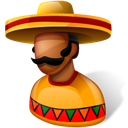To get into a game, the first thing to find out is the table limits. In a 4/8 Hold’em game, all bets in the first 2 rounds (before and after the Flop) must be in increments of $4, and the last 2 rounds (after the Turn and the River) $8. Typical limits for casino Texas Hold’em are: 2/4, 3/6, 4/8, 8/16, 15/30, 30/60 and 40/80. In No-Limit Hold’em, you can bet as much as you want, up to all of your chips, at any time.
The limits tell you two very important things: how much money you need and what type of opponents you’ll face.
A good rule of thumb for a starting bankroll is 20 times the “big bet,” so if you were playing 3/6 Hold’em, you should buy in for $120. You can buy chips from a cashier, or an attendant will bring them to you at the table.
Low-limit games tend to be populated by locals who play very conservatively. You’ll find these games mostly at the Downtown and off-strip poker rooms like Binion’s and Palace Station. There’s not a lot of action, and the rooms aren’t very inviting.
High-Limit and No-Limit games (15/30 and above) are the realm of “Rounders,” professionals who make their living playing poker. The Bellagio is Las Vegas’ premier high-limit room. Unless you can stomach losses measured in the thousands or have a lot of poker experience, it’s best to avoid these games.
The best bet for the casual player is the low- to mid-limit. These games offer nice surroundings and players with varied experience levels, which translate into friendly games with lots of action.
Once you decide where to play, be sure to budget plenty of time. Cause sometimes, the wait can be well over an hour.
The game itself demands a lot of time too. Despite what you see on T.V., the vast majority of your time is spent mucking your cards.
The good news is that your money lasts a long time. Only the two players to the immediate left of the dealer are forced to ante each hand: a “small blind” equal to half the lower betting limit and a “big blind” equal to the lower limit. A full table has 10 players, so even if you folded every hand in a round, it would only cost you 1.5 times the lower limit: $6 in a 4/8 game. 10 bad hands at a blackjack table will cost you $100 in a fraction of the time.
There are some other casino-related costs to consider, however.
In exchange for the safe environment, fair game and free drinks, the poker room charges a commission called the “rake.” This is typically a percentage of each pot up to a set maximum. In the 2/4 game at Binion’s, the rake was 10% up to a maximum of $4. So the house always wins, but at least it’s only when you do too.
The dealers depend on tips for a large portion of their income. While not mandatory, 3% of your winnings are considered standard.
If you don’t have time for all this mucking and raking, and just want a quick shot of No-Limit Hold’em excitement, then tournaments are the way to go. Tournaments allow you to play with a lot more chips than you could otherwise afford, use a rapidly increasing blind structure to speed up the action, and offer the chance to win thousands of dollars.
For $130 to $330 (depending on the day of the week), players get $500-$750 in tournament chips and play until someone has them all. If less than 50 people enter, the top 5 finishers share the purse; if more than 50, the top 9.
If that sounds like too much to risk on the long odds of beating 50 other players, show up at the poker room at 1 o’clock to sign up for a satellite. These 1-table mini-tournaments last about an hour and are the best poker value in Vegas. For $35 to $75, 10 players receive $300 in tournament chips and the top 2 finishers win a seat in that night’s main event.
So the next time you’re in Vegas, talk to a brush and tune in to a satellite. It may not be exactly like T.V., but it’ll sure feel like it.
Tags: online poker guide
 Learn poker and improve your poker game with Paco! Paco offers many ways to learn the game, including free games and free tournaments.
Paco Poker provides an excellent opportunity for beginners to learn how to play poker and for anyone who really wants to take seriously this game.
Learn poker and improve your poker game with Paco! Paco offers many ways to learn the game, including free games and free tournaments.
Paco Poker provides an excellent opportunity for beginners to learn how to play poker and for anyone who really wants to take seriously this game.